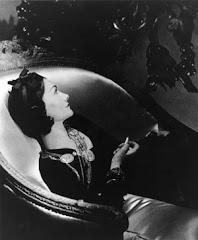The Telegraph also has an informative piece by Judy Rumbold tracking the development of the It bag, from the Fendi Baguette to the present (the YSL Downtown). As she points out:
They transcend tricky divisions to do with weight, age and social status. In short, bags are not just for skinny bitches. There is no such thing as a size-zero bag.I have two of the bags she mentions, the Baguette (actually, I have two of these, one in red and one in purple suede) and a Leulla Giselle. When I bought the latter, a couple of years ago at a Vogue sample sale in aid of Turkish disaster relief, I was dithering between the Giselle and a Marni, until Alexandra Shulman, editor of UK Vogue, and my oracle at all times of hesitation, came over and told me what to do. 'That bag's a classic,' she said, pointing to the Giselle,'I've got the Marni, the clasp broke.'

I don't use the Giselle all that often but I agree, if you buy a classic bag, even if it once was an It bag, it will come round again. I am not too proud to carry my little suede Baguettes at parties, they are the perfect evening bag, sitting snugly under the shoulder. I just cannot see the point of the bloody clutch. I already need two hands, one for the glass of champagne, the other for the canape. I know you can wedge them under the arm clamping the thing against your rib cage, but that's just more Chinese foot-binding, as far as I'm concerned.



